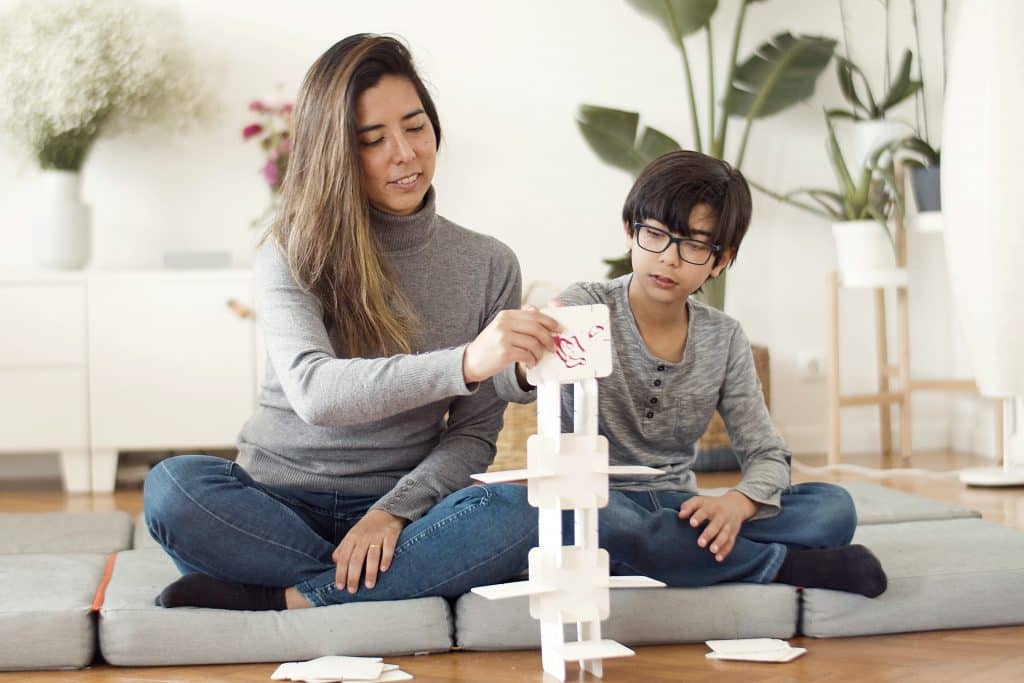My youngest cousin just celebrated his second birthday. At his little party, all the kids spent more time glued to their iPads than playing with all the exciting new toys. It got me thinking about how much screen time has become the norm and how kids with special needs are uniquely impacted. I can see it’s a challenge for most parents. Still, after speaking with a handful of caregivers, I realized that getting a handle on screen time seems next to impossible! So today, I want to share tips and strategies to help you reduce screen time and foster healthier tech habits for your whole family.
Table of Contents
Ways to Get Rid of Screen Time
Getting rid of screen time sounds ambitious, but here’s the thing: it doesn’t have to mean totally banning the use of devices. The goal is to be intentional about tech’s role in your family’s life. Here are some tips to help you find that balance:
Set Clear Goals and Boundaries
Start by defining healthy screen time for your family. This might be different for each child depending on their age, needs, and interests. Once you have a goal in mind, establish clear rules about when and where screens can be used and for how long.
Goally | The Safest Tablet for Kids

Be Intentional About Screen Time
Not all content is created equal. When your kids have screen time, encourage them toward educational programs, interactive games, or creative apps. Be mindful of passive scrolling or shows that don’t add value to their lives.
Reduce Screen Time Slowly
If your kids are used to much screen time, don’t try to take it away immediately. Start by scaling back 30 minutes and gradually increase that time each week. It is a good idea to start with a time audit to see how much time your kids spend in front of screens.
Lead by Example
The easiest way for kids to learn is to watch what you do! Be mindful of your device habits, and work on putting your phone away when spending time with your kids.

Read more: How Much Screen Time is Healthy?
Make Other Activities More Appealing
Bored kids almost automatically turn to screens as a form of entertainment. Help them rediscover other fun activities they can enjoy. Here are some ideas to jumpstart your kids’ playtime:
- Build a fort or have a pillow fight
- Read books together
- Put together a puzzle
- Go for a walk or bike ride
- Draw or paint a picture
Encourage Independent Play
If your kids turn to devices when bored, help them learn how to entertain themselves. Playing independently is a great skill that helps boost their imagination and problem-solving abilities.
Swap Screen Time for Quality Time
Instead of defaulting to devices, focus on planning activities that involve the whole family. Get kids involved and let them choose the activity. Try visiting the park, swimming, playing sports, or board games. Even simply preparing and enjoying meals together can make a big difference.
Goally | 100+ Streaming Video Classes
Does your child need some extra guidance on building essential life skills? Goally’s skill building tablet for kids includes a TV app that has the most robust video library of skills training videos for kids. Ranging from content like “How to Brush Your Teeth” to “How to Make Friends at School,” we have dozens of interactive video lessons for kids with thinking and learning differences.

HERE’s a video explaining how to works.
It may seem overwhelming to cut back on screen time at first. Still, you can guide your kids to develop more balanced tech habits by going slow, setting clear expectations, and offering engaging alternatives. Remember, consistency is key! This will ultimately benefit their well-being, relationships, and development.
Credible Sources
- American Academy of Pediatrics: – Offers research-backed resources and recommendations for healthy screen time use for kids of all ages.
- Child Mind Institute: – Provides advice and support on a variety of children’s behavioral and mental health issues, including tips on managing screen time.
- Understood: – Focuses on supporting families of kids with learning and thinking differences, offering insights on balancing technology use with other essential activities
FAQ’s About How to Get Rid of Screen Time
Why is it important to reduce screen time for kids? Excessive screen time can affect a child's development, sleep, social skills, and overall well-being. Reducing screen time promotes healthier habits and allows more time for learning and play. How do I set limits on screen time? Create clear and consistent rules about when and where devices can be used and for how long. Set family goals and involve your children in the process. What are alternatives to screen time? Offer engaging options like arts and crafts, reading, board games, outdoor play, or helping with household chores. Prioritize family time and shared activities. How can I get my kid to buy into reduced screen time? Explain the benefits of less screen time in a way they understand. Make it a collaborative process and give them choices within the boundaries you set. What if my child throws tantrums when I cut back on screen time? Remain calm and consistent. Offer alternative activities and acknowledge their feelings, but don't give in to the tantrums.
Emily is a seasoned blog writer for Goally, leveraging her extensive background in child psychology and special education to provide valuable insights and resources for parents. Her commitment to understanding and addressing the unique needs of these children, combined with her expertise in educational strategies, makes her a credible and empathetic voice for families.






